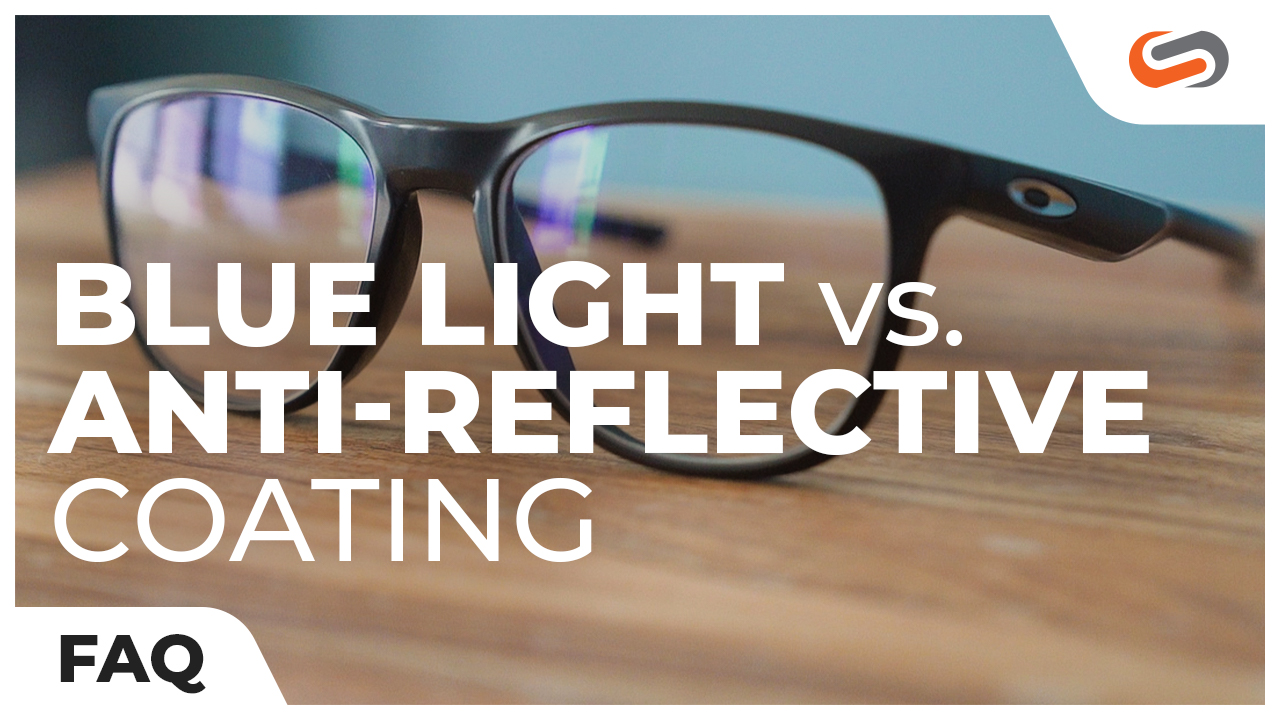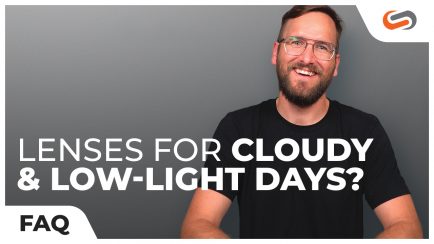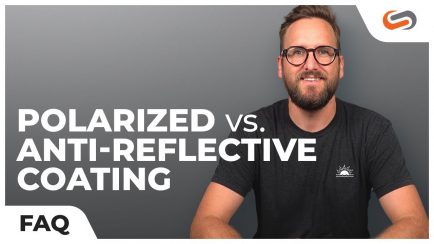If you're wondering what the difference is between anti-reflective coating vs. blue light coating, you're not alone! It's a question we get a lot, so we want to clear it up and better equip you to know which coating is right for you. Continue on to find out how the two coatings are similar, and how they're different.
Anti-Reflective Coating vs. Blue Light Coating
1. What Is an Anti-Reflective Coating?
2. What Is a Blue Light Coating?
3. Anti-Reflective vs. Blue Light: Similarities & Differences
3. Prescription Anti-Glare Glasses at SportRx
More of a visual person? Eyeglass Tyler has you covered. Watch as he compares anti-reflective coating vs. blue light coating.
What Is an Anti-Reflective Coating?
Also known as AR, non-glare, or anti-glare, anti-reflective coating is applied to the surface of the lens to minimize glare and reflection bouncing off of it. It's a really useful and beneficial coating to have, and we almost always recommend it. It's most often applied to both sides of eyeglass lenses, and on the back side of sunglass lenses.
We have a lot of resources available when it comes to this topic! If you have more questions, be sure to check out if anti-reflective coatings are worth it, if you even need it on your sunglasses, and a comparison of polarized lenses vs. an anti-reflective coating.
What is a Blue Light Coating?
An important distinction to make before we jump into this section is that there are blue light-blocking lenses that don't require a coating; it's part of the makeup of the lens. What we're discussing is a blue light coating. Why would we need this coating? With so many digital devices being used daily, harmful shortwave blue light damage has become increasingly prevalent. To read more about the harmful effects of blue light exposure, visit our blog on blue light explained.
A blue light coating is often found within an anti-reflective coating. At SportRx for example, our blue defense coating is an AR coating with the added benefit of blocking damaging blue light.
Anti-Reflective vs. Blue Light: Similarities & Differences
When it comes to the similarities of anti-reflective and blue light coatings, they're both AR coatings, so they have the benefit of minimizing glare. The difference is the blue defense coating has the added blue light-blocking capabilities in addition to the AR coating. In summary, they're both considered anti-glare glasses, but only one is anti-blue!
Prescription Anti-Glare Glasses at SportRx
Need prescription anti-glare glasses or anti-glare lenses? Done. When you shop with us, you’ll find video guides and tooltips throughout the build process as you customize the perfect pair. An answer to all your questions is at your fingertips, and if you want to chat with an expert, contact us. We’ll put you in touch with one of our friendly in-house opticians who can help you build your prescription anti-reflective glasses or blue light glasses — or both!
Ditch risky online shopping with the See Better Guarantee. Try your anti-glare glasses or blue light glasses for 45 days. If you’re not 100% satisfied, send them back. Get a full refund, exchange, or credit towards a better pair. And return shipping? It's on us. Get your pair of prescription glasses or sunglasses at SportRx today!






https://www.sportrx.com/wiley-x-boss.html#/summary
Of course, if there is ever anything our opticians may be able to assist you with, you can reach us at 877-289-2999